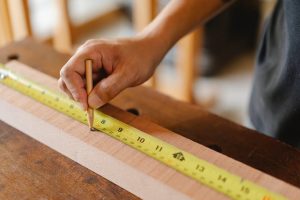
Kiteboarding is an exhilarating water sport combining elements of surfing and paragliding. The kiteboard‚ a crucial component‚ directly impacts performance‚ safety‚ and overall experience‚ making size selection vital for all riders.
Why Kiteboard Size Matters for Performance and Safety
Kiteboard size significantly impacts both performance and safety. A board that is too small may lack buoyancy‚ requiring more speed to plane‚ while a board that is too large can be difficult to control‚ especially in strong winds. Proper sizing ensures optimal upwind performance‚ stability‚ and maneuverability. For beginners‚ a larger board provides stability and easier planing‚ building confidence. For advanced riders‚ a smaller board allows for tighter turns and freestyle tricks. Incorrect sizing can lead to reduced control‚ making it harder to navigate safely. Thus‚ choosing the right kiteboard size is essential for maximizing enjoyment‚ improving skills‚ and minimizing risks on the water.
Overview of Kiteboarding Disciplines and Their Size Requirements
Kiteboarding encompasses various disciplines‚ each requiring specific kiteboard sizes for optimal performance. Freestyle riders often prefer smaller boards (130-140cm) for tricks and agility‚ while wave riders opt for directional boards (140-150cm) for stability in surf. Big air enthusiasts choose medium-sized boards (135-145cm) for balance between speed and lift. Race and hydrofoil disciplines demand longer‚ narrower boards (150cm+) for efficiency and glide. Beginners typically start with larger‚ wider boards (145cm+) for stability and ease of planing. Understanding these size requirements helps riders select the right board for their riding style‚ ensuring better control‚ performance‚ and safety in different conditions.

Factors Influencing Kiteboard Size
Rider weight‚ skill level‚ wind conditions‚ and riding style are key factors influencing kiteboard size. Proper sizing ensures control‚ stability‚ and performance for all kiteboarding disciplines and conditions.
Rider Weight and Its Impact on Kiteboard Size
Rider weight significantly influences kiteboard size‚ as it affects buoyancy and stability. Heavier riders typically require larger boards for sufficient floatation and control‚ while lighter riders can manage with smaller sizes. Generally‚ kiteboards range from 130cm to 150cm in length‚ with widths varying to accommodate different weights. A rider’s weight determines the board’s volume and surface area needed for optimal performance. Proper sizing ensures the board can handle the rider’s mass effectively‚ providing the right balance of speed and maneuverability. Choosing the wrong size can lead to poor performance or safety issues‚ making weight a primary factor in selecting the ideal kiteboard size.
Skill Level: Choosing the Right Size for Beginners vs. Advanced Riders
Skill Level: Choosing the Right Size for Beginners vs. Advanced Riders
Skill level plays a crucial role in determining the appropriate kiteboard size. Beginners benefit from larger boards‚ typically between 140cm to 150cm‚ as they provide greater stability‚ buoyancy‚ and forgiveness while learning basic maneuvers. The increased surface area helps newer riders stay afloat and maintain balance during starts and stops. In contrast‚ advanced riders often prefer smaller boards‚ around 130cm to 140cm‚ allowing for sharper turns‚ faster acceleration‚ and more agile performance. The smaller size enables better control and responsiveness‚ catering to freestyle or wave riding. Matching the kiteboard size to the rider’s skill level ensures a smoother learning curve for beginners and enhanced performance for experienced riders.
Wind Conditions and Their Effect on Kiteboard Size Selection
Wind conditions significantly influence kiteboard size selection‚ impacting both performance and safety. In lighter winds‚ larger kiteboards (140cm–150cm) are preferable due to their greater buoyancy and stability‚ making it easier to stay afloat and maintain momentum. Conversely‚ in stronger winds‚ smaller boards (130cm–140cm) are ideal as they reduce lift and provide better control‚ preventing the rider from being overpowered. Medium winds offer a balance‚ allowing riders to use standard sizes (135cm–145cm) for all-around performance. The right board size ensures optimal power management‚ maneuverability‚ and comfort across varying wind strengths‚ enhancing the overall kitesurfing experience.
Riding Style: Freestyle‚ Wave‚ or Big Air and Their Size Requirements
Riding style plays a crucial role in determining the ideal kiteboard size. Freestyle riders often prefer smaller boards (130cm–138cm) for agility and trick performance‚ allowing sharp turns and quick maneuvers. Wave riders benefit from slightly larger boards (135cm–145cm) for stability and control in choppy conditions. Big Air enthusiasts opt for medium-sized boards (138cm–142cm) to balance speed and lift‚ enabling powerful jumps. Each style demands specific size characteristics to enhance performance‚ ensuring the board complements the rider’s technique and objectives. Matching the kiteboard size to the riding style ensures optimal responsiveness‚ control‚ and an enjoyable experience on the water.
Understanding Kiteboard Size Charts
Kiteboard size charts provide a comprehensive guide to selecting the ideal board size based on rider weight‚ skill level‚ and riding style‚ ensuring optimal performance and safety.
How to Read and Interpret Kiteboard Size Charts
Reading kiteboard size charts involves understanding how rider weight‚ skill level‚ and wind conditions influence board size. Charts typically organize data in a table format‚ with columns representing rider weight ranges and rows indicating wind speeds. Each cell suggests an appropriate board size for the given conditions. For example‚ lighter riders may require smaller boards for better control‚ while heavier riders need larger boards for stability. Additionally‚ charts often account for riding styles‚ such as freestyle or wave riding‚ which may favor different sizes. By matching your weight‚ skill level‚ and riding style to the chart‚ you can determine the optimal board size for your needs.
Standard Kiteboard Size Ranges for Different Riding Styles
Kiteboard sizes vary based on riding styles‚ with standard ranges tailored to specific disciplines. For freestyle and all-purpose riding‚ boards typically range from 130cm to 150cm in length and 37cm to 43cm in width. Wave and directional boards are slightly longer‚ often between 140cm to 160cm‚ with narrower widths for better maneuverability. Big air and high-performance boards tend to be smaller‚ around 125cm to 140cm‚ allowing for faster turns and loftier jumps. Foil kiteboards are notably shorter‚ ranging from 35″ to 45″‚ as they rely on hydrofoil technology for lift. Understanding these size ranges helps riders match their board to their preferred style for optimal performance and control.
Using Kite Size Wind Charts to Determine the Best Kiteboard Size
Kite size wind charts are essential tools for determining the appropriate kiteboard size based on wind conditions. These charts typically correlate kite size with wind speed‚ helping riders select the right kite for their session. Larger kites are used in lighter winds‚ requiring smaller boards for better control‚ while smaller kites in stronger winds pair with larger boards for added buoyancy and stability. By cross-referencing wind speed with kite size‚ riders can infer the ideal kiteboard dimensions for their conditions. This ensures optimal performance‚ balance‚ and safety‚ making wind charts a crucial resource for matching kite and board sizes effectively.

Kiteboard Types and Their Size Considerations
Kiteboards vary in type‚ with Twin-Tip‚ Directional‚ and Foil options‚ each requiring specific size adjustments to suit riding styles‚ performance needs‚ and water conditions effectively.
Twin-Tip Kiteboards: Size Recommendations for All-Purpose Riding
Twin-Tip kiteboards are the most popular choice for freestyle and all-purpose riding due to their symmetric design and versatility. For most riders‚ sizes between 130-150cm are ideal‚ balancing stability and maneuverability. Lighter riders or those in lighter winds may prefer smaller boards (130-135cm) for easier handling‚ while heavier riders or those in stronger conditions benefit from larger sizes (140-150cm). The width of the board also plays a role‚ with wider boards offering more buoyancy and narrower ones improving agility. Choosing the right Twin-Tip size ensures optimal performance‚ whether carving‚ jumping‚ or cruising‚ making it essential to consider rider weight‚ skill level‚ and wind conditions when selecting your board.
Directional Kiteboards: Size and Shape for Wave and Freeride
Directional kiteboards are designed for wave riding and freeride‚ offering superior control and maneuverability. These boards typically range in size from 140cm to 160cm‚ with a focus on length and shape to optimize performance in waves. A rounded nose and squared-off tail enhance turning capabilities‚ while the narrower width improves agility. Riders should choose sizes based on their weight‚ skill level‚ and wave conditions‚ with smaller boards (140-145cm) suiting lighter riders or smaller waves‚ and larger boards (150-160cm) better for heavier riders or bigger waves. The board’s volume is also crucial‚ ensuring enough buoyancy to maintain momentum in lighter winds or larger swells.
Foil Kiteboards: Size and Setup for Hydrofoiling
Foil kiteboards are specialized for hydrofoiling‚ offering a unique riding experience with minimal water contact. These boards are smaller‚ typically ranging from 45cm to 60cm in width and 90cm to 120cm in length‚ designed to reduce drag and maximize efficiency. The narrower width enhances stability during takeoff and maneuverability in the air. For hydrofoiling‚ the setup includes a hydrofoil attached to the board‚ with mast heights varying from 40cm to 90cm depending on skill level and conditions. Lighter riders may prefer shorter masts for better control‚ while taller masts suit advanced riders seeking higher jumps. Proper adjustment of the foil’s angle and wing size ensures optimal performance‚ making foil kiteboards ideal for experienced riders seeking a thrilling‚ high-flying experience.

Determining the Right Kiteboard Size for You
Your kiteboard size depends on weight‚ skill level‚ wind conditions‚ and riding style. Use size charts to balance performance and control for optimal kiting experiences.
How to Choose the Right Length and Width for Your Kiteboard
Choosing the right length and width for your kiteboard is essential for optimal performance. Length affects stability and speed‚ while width influences buoyancy and maneuverability. For beginners‚ a slightly longer and wider board provides better stability and easier control. Advanced riders may prefer shorter‚ narrower boards for sharper turns and freestyle tricks. Consider your weight‚ skill level‚ and riding style when selecting dimensions. Use a kiteboard size chart to find the ideal measurements tailored to your needs. Test different sizes if possible to ensure the best fit for your kiting experience.
Understanding the Importance of Kiteboard Volume
Kiteboard volume plays a crucial role in determining buoyancy and performance. Higher volume boards provide better floatation‚ making it easier to get up and stay on the water‚ especially for lighter riders or in lighter winds. Lower volume boards‚ while less buoyant‚ offer greater agility and control‚ making them ideal for experienced riders in stronger wind conditions. Volume directly impacts how the board interacts with water and wind‚ affecting speed‚ stability‚ and maneuverability. Balancing volume with other factors like length and width ensures optimal performance tailored to your riding style and conditions. Modern kiteboards often feature efficient volume distribution for enhanced overall performance.
Using Your Height and Weight to Find the Ideal Kiteboard Size
Your height and weight are key factors in selecting the right kiteboard size. Taller riders typically require longer boards for stability‚ while shorter riders may prefer shorter boards for easier maneuverability. Weight plays a significant role in buoyancy; lighter riders may need boards with more volume to stay afloat‚ while heavier riders can opt for smaller‚ more responsive boards. Using a kiteboard size chart tailored to your height and weight ensures a balanced setup‚ optimizing performance and comfort. This personalized approach helps riders achieve better control‚ stability‚ and overall enjoyment on the water‚ making it essential to consider these metrics when choosing your kiteboard.
Kite Size and Its Relation to Kiteboard Size
Kite size significantly impacts kiteboard performance‚ as larger kites require smaller boards for control‚ while smaller kites pair with larger boards for stability and floatation‚ ensuring optimal balance.
How Kite Size Impacts Kiteboard Performance
Kite size plays a crucial role in kiteboard performance‚ affecting power‚ control‚ and maneuverability. A larger kite generates more power‚ enabling faster speeds and higher jumps‚ which is ideal for big air enthusiasts. However‚ it may be challenging to control in strong winds‚ especially for beginners. A smaller kite offers better control and precision‚ making it suitable for freestyle tricks and lighter wind conditions. The kite size must complement the rider’s weight‚ skill level‚ and wind conditions to ensure optimal performance. Pairing the right kite size with the kiteboard enhances responsiveness‚ stability‚ and overall riding efficiency‚ making it essential to choose appropriately for a safe and enjoyable experience.
Matching Kite and Kiteboard Sizes for Optimal Performance
Matching kite and kiteboard sizes is essential for achieving balance‚ control‚ and efficiency in kiteboarding. A larger kite typically requires a larger kiteboard to handle the increased power‚ while a smaller kite pairs better with a smaller board for precise control. Rider weight and skill level also influence this matchup‚ as lighter riders may prefer smaller setups for easier handling‚ while heavier riders need more power and stability. Additionally‚ wind conditions play a role‚ with stronger winds requiring smaller kites and boards for better control. Ensuring harmony between kite and kiteboard sizes enhances responsiveness‚ reduces fatigue‚ and maximizes overall performance‚ making it a critical factor for every rider.

Evolution of Kiteboard Sizes Over Time
Kiteboard sizes have evolved from smaller‚ basic designs to larger‚ specialized boards‚ reflecting advancements in materials and riding styles‚ ensuring optimal performance for various disciplines and conditions.
Historical Changes in Kiteboard Design and Size
Kiteboard design and size have undergone significant transformations since the sport’s inception. Early boards were smaller and more basic‚ often resembling surfboards‚ with limited size options. As the sport evolved‚ manufacturers began experimenting with shapes‚ materials‚ and sizes to enhance performance. The introduction of carbon fiber and other lightweight materials allowed for more durable and responsive boards. Over time‚ kiteboards grew slightly larger to accommodate various riding styles‚ such as freestyle and wave riding. These historical changes reflect advancements in technology and a deeper understanding of rider needs‚ leading to the diverse range of sizes available today for different disciplines and preferences.
Modern Trends in Kiteboard Size and Shape
Modern kiteboards showcase advancements in design‚ with sizes and shapes tailored to specific riding styles. Twin-tip boards remain popular for freestyle and all-purpose riding‚ while directional boards are favored for wave and carving. Recent trends include slightly narrower and longer boards for better upwind performance. Additionally‚ eco-friendly materials are gaining traction‚ reducing environmental impact. Customization options have also increased‚ allowing riders to adjust size and shape based on personal preferences. These innovations reflect a focus on performance‚ sustainability‚ and adaptability‚ ensuring kiteboards meet the diverse needs of today’s riders across various disciplines and conditions.
Kiteboard Maintenance and Size-Specific Tips
Regular maintenance ensures kiteboard longevity. Inspect for damage‚ clean thoroughly‚ and store properly. Size-specific care includes protecting edges and fins. Use suitable products to prevent wear and tear.
How to Maintain Your Kiteboard for Longevity
Regular maintenance is essential to extend the life of your kiteboard. Inspect for dings‚ cracks‚ or delamination after each use. Clean the board with mild soap and water to remove dirt and salt. Avoid harsh chemicals that can damage the finish. Store your kiteboard in a dry‚ cool place‚ away from direct sunlight to prevent warping. Use a protective cover when transporting to avoid scratches. After sessions in saltwater‚ rinse thoroughly to prevent corrosion. Dry the board before storage to avoid mold. Regularly check and replace worn-out pads‚ straps‚ and fins. Applying a UV protectant and waxing the board periodically can also maintain its condition and performance.
Size-Specific Maintenance Tips for Different Kiteboard Sizes
Different kiteboard sizes require tailored care to maintain performance and longevity. For smaller boards (under 135cm)‚ focus on protecting the edges from dings‚ as they are more prone to damage. Regularly inspect and clean the pads and straps‚ ensuring proper alignment. Larger boards (over 140cm) benefit from extra attention to the fins‚ which can be more susceptible to wear. Directional boards‚ often longer‚ should have their leash and fin systems checked frequently. Foil boards require careful cleaning of the mast and wing to prevent corrosion. Regardless of size‚ always rinse with fresh water‚ avoid extreme temperatures‚ and store in a dry‚ shaded area. Use UV protectants and wax to maintain the board’s finish and performance.
Future Trends in Kiteboard Size and Design
Future trends may include eco-friendly materials‚ lighter constructions‚ and AI-driven designs. Sustainability and innovation will shape kiteboard sizes‚ optimizing performance while reducing environmental impact and increasing accessibility.
Emerging Technologies and Their Impact on Kiteboard Size
Emerging technologies are revolutionizing kiteboard design‚ with advancements in materials and manufacturing processes. Lightweight‚ durable materials like carbon fiber and recycled plastics are becoming more prevalent‚ allowing for smaller‚ yet stronger boards. AI-driven design tools are enabling precise shape optimization‚ tailoring kiteboards to specific riding styles and conditions. Additionally‚ smart technologies‚ such as sensors embedded in boards‚ provide real-time feedback to riders‚ enhancing performance and safety. These innovations are also driving the development of modular kiteboards‚ which can be customized to suit different sizes and preferences. As a result‚ kiteboard sizes are becoming more versatile‚ catering to a wider range of riders while maintaining high performance standards. Sustainability is also playing a key role‚ with eco-friendly materials gaining traction in the industry.
How Sustainability Might Influence Future Kiteboard Sizes
Sustainability is increasingly shaping the future of kiteboarding‚ with eco-friendly materials and production methods becoming a priority. Manufacturers are exploring the use of recycled and biodegradable materials‚ which could lead to lighter and more durable kiteboards. These innovations may result in smaller‚ yet equally efficient‚ board sizes‚ reducing the environmental footprint. Additionally‚ sustainable practices in production could influence size trends‚ as companies strive to minimize waste and resource consumption. The shift toward eco-conscious designs may also encourage riders to choose smaller‚ versatile boards that perform well across various conditions. As sustainability becomes a key industry focus‚ kiteboard sizes may evolve to balance performance with environmental responsibility‚ setting a new standard for the sport.
Choosing the right kiteboard size is crucial for optimal performance and safety. Consider your weight‚ skill level‚ and riding style to make an informed decision.
Final Tips for Choosing the Right Kiteboard Size
Choosing the right kiteboard size is crucial for performance‚ safety‚ and enjoyment. Consider your weight‚ skill level‚ and riding style to make an informed decision. Consult kiteboard size charts and kite size wind charts to narrow down your options. Test different sizes if possible‚ as this hands-on experience provides valuable insights. Seek advice from experienced riders or instructors to ensure the best fit. Remember‚ the right kiteboard size enhances control‚ stability‚ and overall kiting experience. Prioritize these factors to find your ideal kiteboard and enjoy the sport to the fullest.
Encouragement to Test Different Sizes Before Buying
Testing different kiteboard sizes before purchasing is highly recommended to ensure the best fit for your needs. Trying out various sizes allows you to experience how they perform in different conditions and riding styles. This hands-on approach helps you understand the feel and responsiveness of the board‚ which is crucial for both beginners and advanced riders. Visit local kite shops‚ attend demo days‚ or rent boards to gain firsthand experience. Remember‚ the right size will enhance your comfort‚ control‚ and confidence on the water. Don’t hesitate to seek advice from experienced riders or instructors to guide your decision. Testing ensures you make an informed choice and enjoy the sport to its fullest potential.






